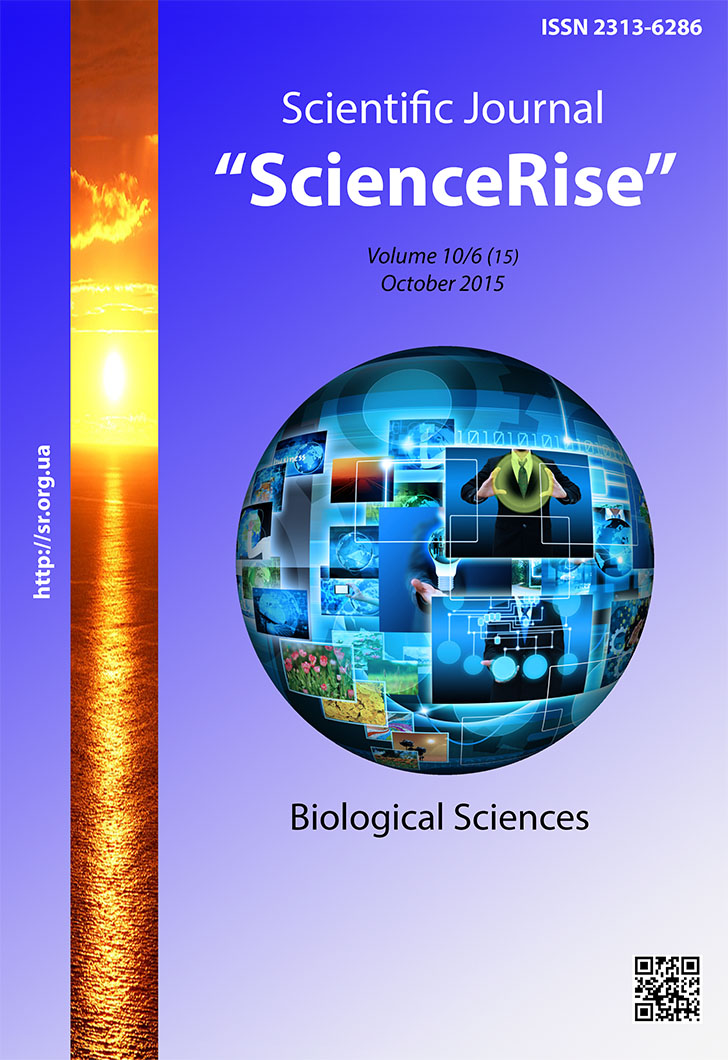Общая характеристика микробиоты колбасных изделий производимая в условиях Азербайджана
DOI :
https://doi.org/10.15587/2313-8416.2015.52006Mots-clés :
сырье, технологические процессы, колбасные изделия, грибы, бактерии, порча продуктов, микотоксиныRésumé
В результате проведенных исследований выявлено, что колбасные изделия характеризуются как одно из мест обитания микроорганизмов и в формировании их микробиоты в целом участвуют 34 видов бактерий и 10 грибов. Показано, что среди этих микроорганизмов имеются немало видов, которые вызывают порчу исследуемых изделий и обогащают их токсичными метаболитами
Références
Biryukova, M. V., Gernet, M. V., Edelev. D. A., Yermolayeva, G. A. et. al. (2010). Safety of food raw materials and food products. Moscow, 27.
Bailes, K. L.; de B. Blackburn, C. (Ed.) (2008). Microbiological spoilage. SPb.: Occupation, 695–740.
Artemyev, S. A., Artemyev, T. N., Dmitriev, A. I., Dorutina, V. V. (2002) .The microbiological control of animal meat, poultry, eggs and their products: Reference. Moscow: KolosS, 288.
Hygienic requirements for safety and nutritional value of food (2002). SanPin 2.3.2.1078-01. Moscow: Federal State Unitary Enterprise "Inter SEN", 186.
Azərbaycan Respublikasının Dövlət Statistika Komitəsi. Available at: http://www.stat.gov.az
Azərbaycan Respublikasının Kənd Təsərrüfatı Nazirliyi. Available at: http://www.agro.gov.az
Godova, G. V., Annual, G. V. (2009). Fundamentals of health food microbiology. Moscow: Publishing House RGAU-MSKHA them. Timiryazev, 46.
GOST 26668-85 (2010). Foodstuffs and taste. Sampling methods for microbiological analyzes. Moscow: Standartinform, 6.
GOST 9958-81 (1988). Sausages and meat products. Methods of bacteriological analysis. Moscow: Publishing Standards, 8.
Netrusov, A. I., Egorov, M. A,, Zakharchuk, L. M. et. al. (2005). Workshop on microbiology. Moscow: The publishing center "Academy", 608.
Eyubov, B. B., Hajiyeva, N. S., Medzhnunova, A. A., Kerimov, Z. M. et. al. (2010). Mycobiota vegetable materials used for different purposes in the conditions of Azerbaijan Bulletin of the Moscow State Regional University, series “Natural sciences”, 4, 55–57.
Rzayeva, A. A. (2015). Feature microbiota sausages on abundance and species composition . Proceedings of the Institute of Microbiology of ANAS, 13 (1), 89–93.
D. R. Boone, R. W. Castenholz, G. M. Garrity (Eds.) (2001). Bergey's manual of systematic bacteriology The Archae and the deeply branching and phototrophic Bacteria. 2nd edition. Springer, New York, Berlin, Heidelberg, 721. doi: 10.1007/978-0-387-21609-6
Sutton, D., Fothergill, A. Rinaldi, M. (2001). Determinant of pathogenic and opportunistic gribov. Moscow: World, 486.
Schizophyllum umbrinum Berkeley. Available at: http://www.mycobank.org/
Kirk, P. M., Cannon, P. F., David , J. C., Stalpes, J. A. (2001). Ainsworth and Bisby’s Dictionary of the fungi. 9th edition. Oxon, Wallingford:CAB International, 655.
Beklemishev, V. N. (1970). Biocenological based on comparative parasitology. Moscow: Nauka, 502.
Lakin, G. F. (1973). Biometrics. Moscow: Higher school, 343.
Zachinyaev, Y. V., Sergienko, S. S. (2006). Micromycetes toxins and their effects on the body. Advances of medical mycology(Rosiya), 7, 101–104.
Téléchargements
Publié-e
Numéro
Rubrique
Licence
(c) Tous droits réservés Азада Айдын кызы Рзаева, Матанат Салман кызы Новрузова 2015

Cette œuvre est sous licence Creative Commons Attribution 4.0 International.
Our journal abides by the Creative Commons CC BY copyright rights and permissions for open access journals.
Authors, who are published in this journal, agree to the following conditions:
1. The authors reserve the right to authorship of the work and pass the first publication right of this work to the journal under the terms of a Creative Commons CC BY, which allows others to freely distribute the published research with the obligatory reference to the authors of the original work and the first publication of the work in this journal.
2. The authors have the right to conclude separate supplement agreements that relate to non-exclusive work distribution in the form in which it has been published by the journal (for example, to upload the work to the online storage of the journal or publish it as part of a monograph), provided that the reference to the first publication of the work in this journal is included.

